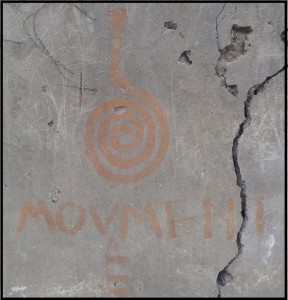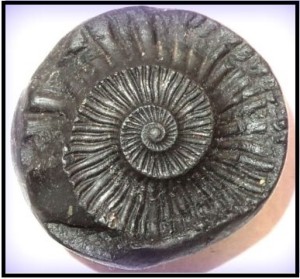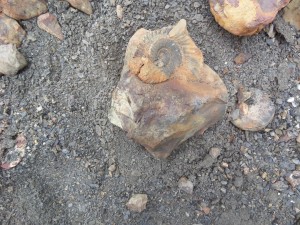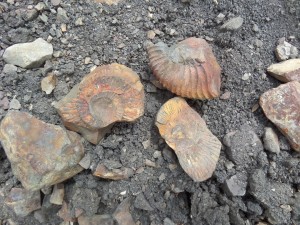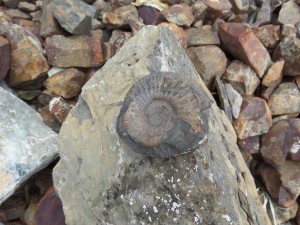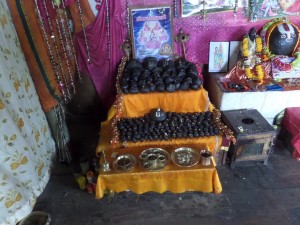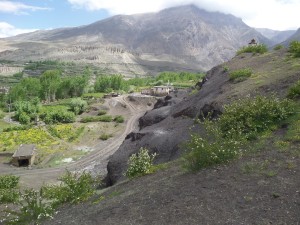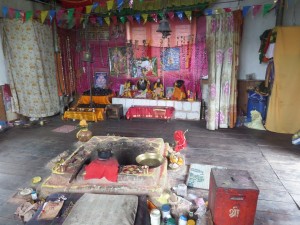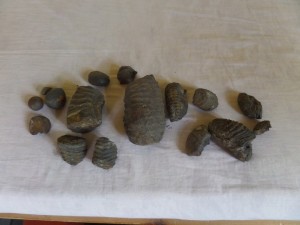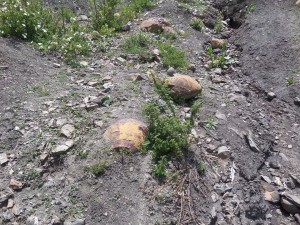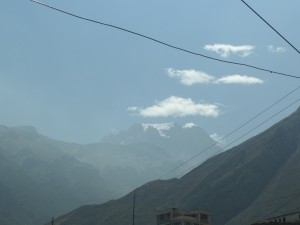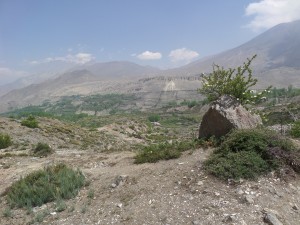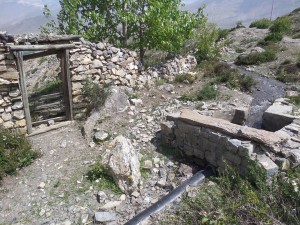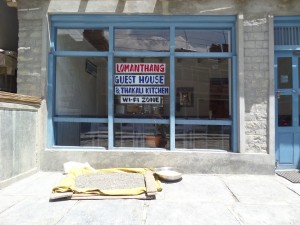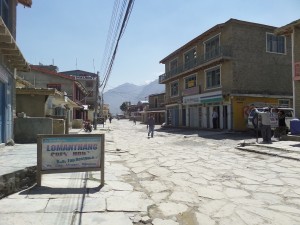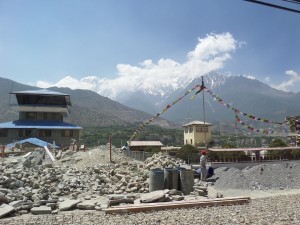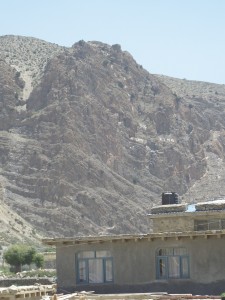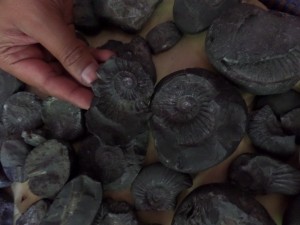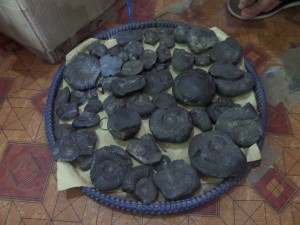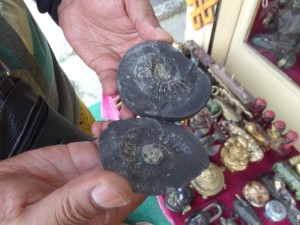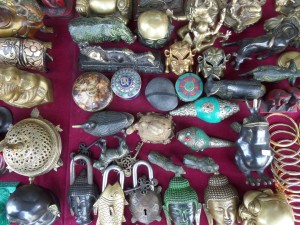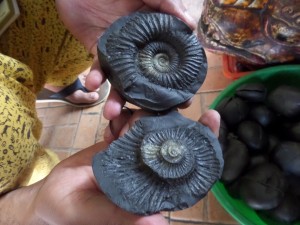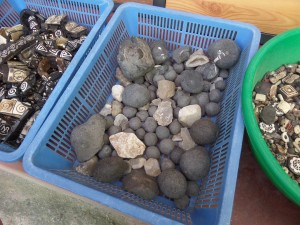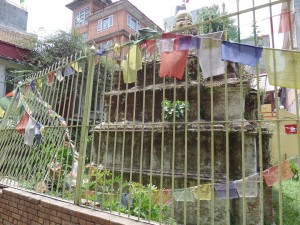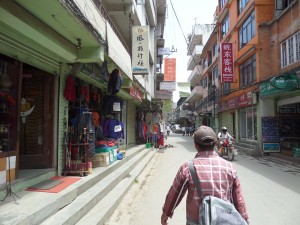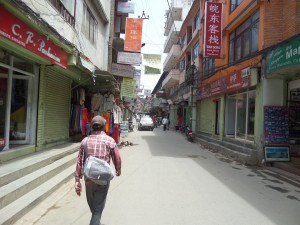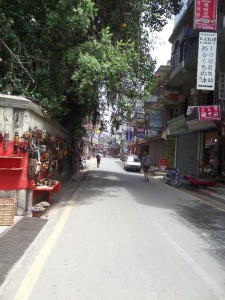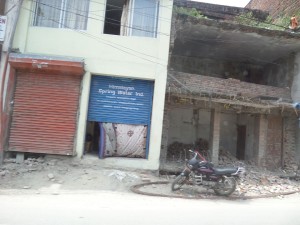I am tremendously cold right now. It’s partially the cloudy, drizzly, weather, which is always something of a treat in the Himalayas, and partially the long hike this morning. My guide and I left early to make our way all the way up to the Vishnu Chulo (Vishnu’s Kitchen), a small shrine/temple a few hundred meters further above Muktinath Temple on the far side of a ridge closer to the Thorong La Pass. Needless to say, it is quite windy and rather cold up there at this point. It was an interesting place though, entirely “natural” in its appearance in that the short, squat, cleaved-stone building housed a shrine that was made up of a large boulder altar with kum kum and tumeric smeared standing stones resting on top of it. Small incense wheels, flowers, and candles were placed variously around the standing stones and hundreds of white prayer cloths were hung from the wooden rafters only a few inches above my head. The overall effect was one of shrouded mystery, carefully picking my way through a dense thicket of Sanskrit cloths to get to the shrine tucked away against the far wall facing the high mountain winds. My guide mentioned to me that this mandir was made in such a fashion, as a “kitchen,” because Vishnu was very hungry; a reference, I think, to a common method of interacting with divine beings and Vedic deities. By that I mean food. Exchanging food with divinities (referred to as Prasadam in Hinduism), along with bathing (called Abisheka Puja), is generally considered one of the most basic responsibilities of any devotee and attributing hunger to divine entities is a reasonably standard method of organizing worship in South Asia.
But what fascinated me even more, actually, was the recurrence of carved or drawn spirals decorating stones and bridges all along our path. Now, the spiral has numerous important symbolic meanings in both Buddhism and Hinduism. Overall, it is a cosmological symbol that refers to the belief in Buddhism and some traditions of Hinduism that the universe moves in a clockwise direction (counter-clockwise if one is a Bon practitioner). This is one reason why pilgrims, nuns, and monks typically circumambulate temples and shrines in a clockwise direction. It may also represent a womb or the movement of a person from birth to death to rebirth (the karmic cycle, which is also represented by the swastika). But, it occurs to me that when you take a moment to look closer, and consider movement itself as a kind of sacred marker…..remind you of anything else?

